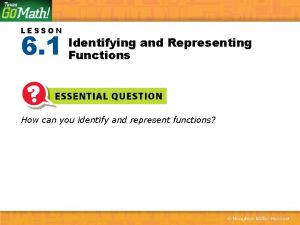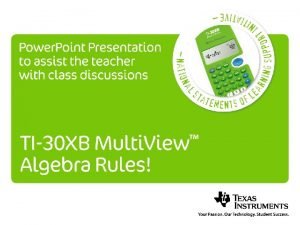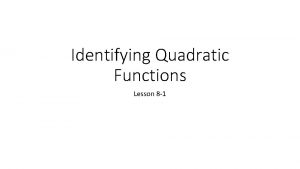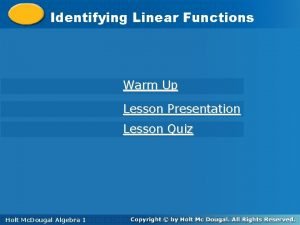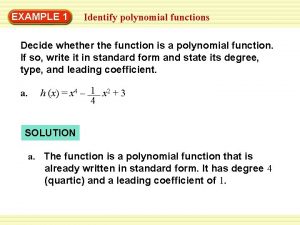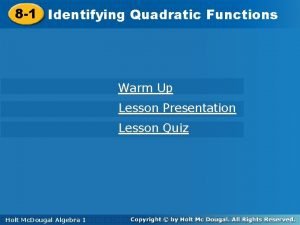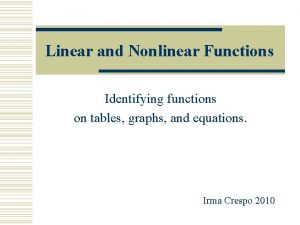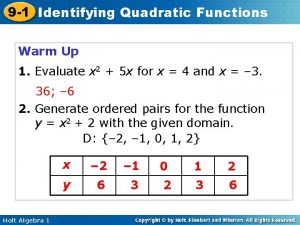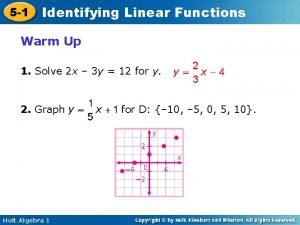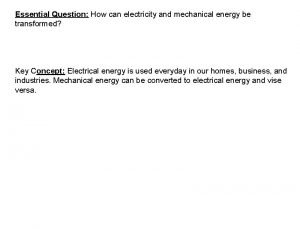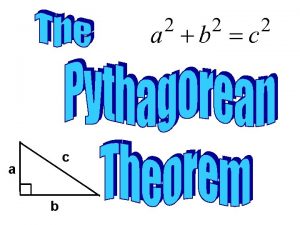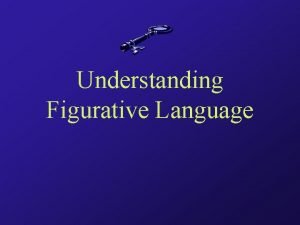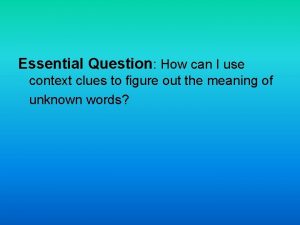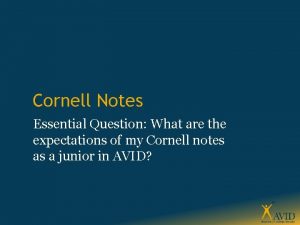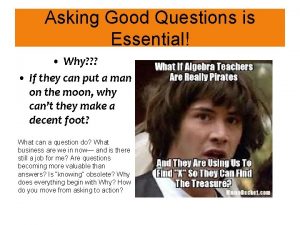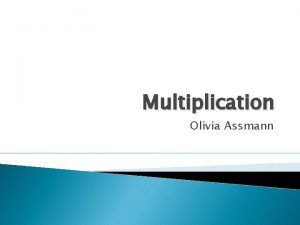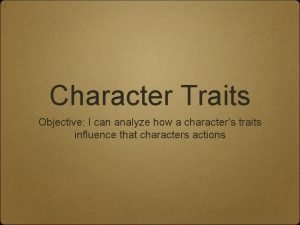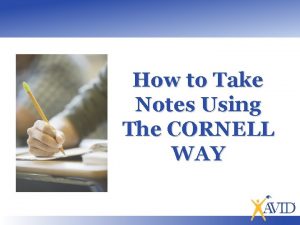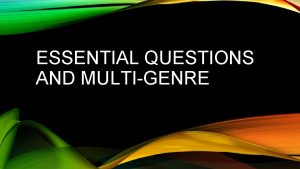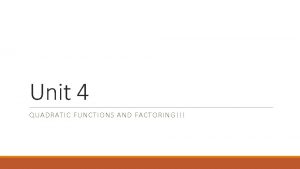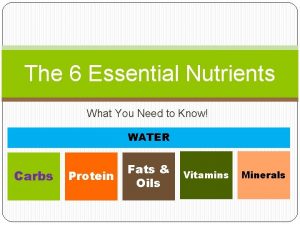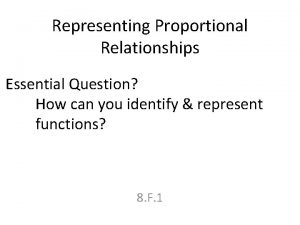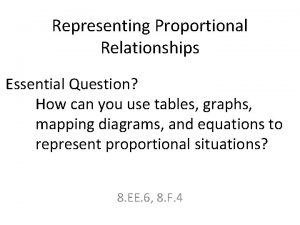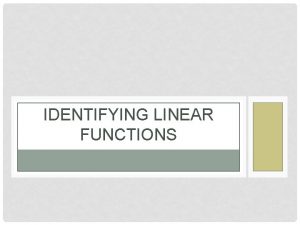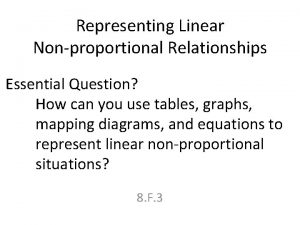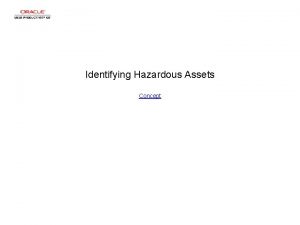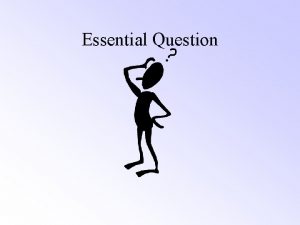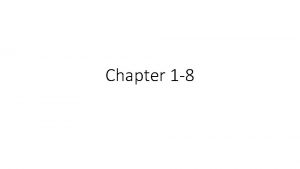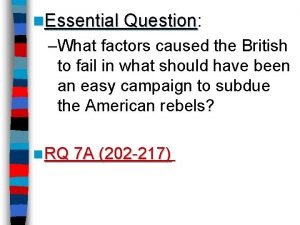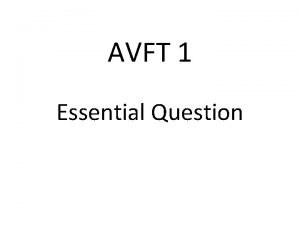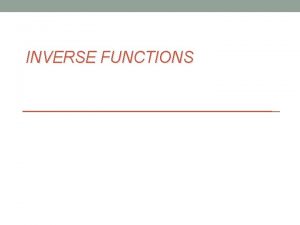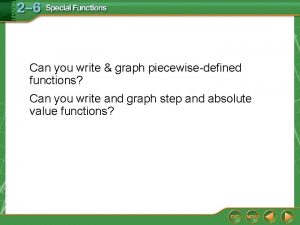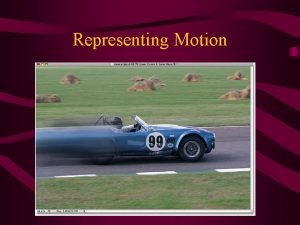Identifying Representing Functions Essential Question How can you










































- Slides: 42

Identifying & Representing Functions Essential Question? How can you identify & represent functions? 8. F. 1

Common Core Standard: 8. F. 1 ─ Define, evaluate, and compare functions. Understand that a function is a rule that assigns to each input exactly one output. The graph of a function is the set of ordered pairs consisting of an input and the corresponding output

Objectives: • Understand that a function is a rule that assigns to each input exactly one output. • Identify whether a relationship is a function from a diagram, table of values, graph, or equation.

Curriculum Vocabulary Function (función): A relationship between an independent variable, x, and a dependent variable, y, where each value of x (input) has one and only one value of y (output). Relation (relación): Any set of ordered pairs. Input (entrada): A number or value that is entered. Output (salida): The number or value that comes out from a process.

Curriculum Vocabulary Domain (dominio): The set of all possible input (x) values. Range (rango): The set of all output (y) values. Continuous graph (gráfica continua): A graph of points that are connected by a line or smooth curve on the graph. There are no breaks. Discrete graph (gráfica discreta): A graph of isolated points.

Curriculum Vocabulary Linear Graph (gráfico lineal): A graph that is a line or a series of collinear points. Collinear Points (puntos colineales): Points that lie in the same straight line. Non-linear graph (gráfico no lineal): A graph that is not a line and therefore not a series of collinear points. Set (grupo): A collection of numbers, geometric figures, letters, or other objects that have some characteristic in common.

REPRESENTING FUNCTIONS There are 4 (FOUR) ways to represent a function that we will explore: 1. TABLE 2. MAPPING DIAGRAM 3. EQUATION 4. GRAPH

FUNCTIONS The diagram below shows the function “add 2. ” Input = 3 Function: Add 2 Output = 5 There is only one possible output for each input. The function “add 2” is expressed in words. It can also be: • • written as the equation y=x+2 represented by a table of values represented as a mapping diagram shown as a graph.

IDENTIFYING FUNCTIONS Look at the following table: INPUT OUTPUT 5 11 10 21 15 31 20 41 25 51 For EACH INPUT THERE IS EXACTLY ONE OUTPUT. You can notice that there is NO REPETITION in the INPUT column. This table represents a function.

IDENTIFYING FUNCTIONS Look at the following table: INPUT OUTPUT 3 9 3 10 5 25 5 26 7 49 For EACH INPUT THERE IS MORE THAN ONE OUTPUT. You can notice that there is REPETITION in the INPUT column. This table DOES NOT represent a function.

IDENTIFYING FUNCTIONS Let’s examine the following situation: Carlos wants to buy some apps for his smartphone. Zynga is offering a game app special. 2 apps will cost him $2. 58. 5 apps will cost him $6. 45. Help Carlos complete the table. Number of Apps Rule Total Cost 2 5 1 x There is a ONE to ONE relationship! This represents a FUNCTION!

IDENTIFYING FUNCTIONS Let’s use the data we found to create a MAPPING DIAGRAM. Number of Apps (x) Total Cost in $ (y) 2 2. 58 5 6. 45 1 1. 29 x 1. 29 x Input: Number of Apps Output: Total Cost in $ 1 1. 29 2 2. 58 5 6. 45 There is a ONE to ONE relationship! This represents a FUNCTION!

IDENTIFYING FUNCTIONS Does the following mapping diagram represent a function? 7 -3 2 9 -15 4 11 -21 6 45 -121 8 5 10 15 20 25

IDENTIFYING FUNCTIONS Does the following mapping diagram represent a function? 1 10 2 20 3 11 5 30 4 40 5 50

IDENTIFYING FUNCTIONS

IDENTIFYING FUNCTIONS So far we have seen a function represented as: • A TABLE • A MAPPING DIAGRAM • An EQUATION Input Output 1 3 2 6 3 9 4 12 5 15

IDENTIFYING FUNCTIONS The fourth way to represent a FUNCTION is as A GRAPH: For A GRAPH to represent a FUNCTION, it must pass the VERTICAL LINE TEST. Pass a vertical line over the entire graph. If at any time it touches more than one point at the same, it is NOT A FUNCTION

IDENTIFYING FUNCTIONS Is this a function? Continuous or discreet?

IDENTIFYING FUNCTIONS Is this a function? Continuous or discreet?

IDENTIFYING FUNCTIONS Is this a function? Continuous or discreet?

IDENTIFYING FUNCTIONS Is this a function? Continuous or discreet?

IDENTIFYING FUNCTIONS Is this a function? Continuous or discreet?

IDENTIFYING FUNCTIONS We have now seen a FUNCTIONS represented as: • A TABLE • No repetition in the input (x-values) • A MAPPING DIAGRAM • Shows a ONE to ONE relationship • An EQUATION • You can get y all alone on one side of the equal sign • A GRAPH • Passes the vertical line test Input Output 1 3 2 6 3 9 4 12 5 15

FUNCTIONS For EACH INPUT THERE IS EXACTLY (ONE AND ONLY) ONE OUTPUT.

IDENTIFYING DOMAIN & RANGE From a TABLE: INPUT OUTPUT 5 11 10 21 15 31 20 41 25 51 DOMAIN: list the x values {5, 10, 15, 20, 25} RANGE: list the y values {11, 21, 31, 41, 51}

IDENTIFYING DOMAIN & RANGE Identify the domain and range: INPUT OUTPUT 2 7 3 7 4 7 5 7 6 7 DOMAIN: list the x values {2, 3, 4, 5, 6} RANGE: list the y values {7}

IDENTIFYING DOMAIN & RANGE From a GRAPH: First IDENTIFY all the ORDERED PAIRS (-10, 4), (-5, 4), (-4, -6), (-3, 8), (3, 2), (3, -3), (6, 9), (8, 3), (8, -5) DOMAIN: list the x values {-10, -5, -4, -3, 3, 6, 8} RANGE: list the y values {4, -6, 8, 2, -3, 9, 3, -5} {-6, -5, -3, 2, 3, 4, 8, 9} Is the graph continuous or discreet?

IDENTIFYING DOMAIN & RANGE Identify the domain and range: Is the graph continuous or discreet?

For Accelerate classes only • Objective: – To identify dependent & independent quantities – To identify the domain and range of a function – To recognize, evaluate, and express functions using function notation.

Curriculum Vocabulary Dependent quantity (cantidad de dependientes): When one quantity depends no another in a problem situation, it is said to be the dependent quantity. Independent quantity (cantidad independiente): The quantity that the dependent quantity depends upon is called the independent quantity.

Circle the independent quantity and underline the dependent quantity in each statement: • the number of hours worked and the money earned. • your grade on a test and the number of hours you studied. • the number of people working on a particular job and the time it takes to complete a job. • the number of games played and the number of points scored. • the speed of a car and how far the driver pushes down on the gas pedal.

IDENTIFYING DOMAIN & RANGE From a GRAPH: Is the graph continuous or discreet? Continuous Functions Most CONTINUOUS FUNCTIONS are shown on the graph by using arrows. It means that the x-values of the function continue off to infinity in both directions. DOMAIN: The domain of a continuous function with arrows in both directions will always be ALL REAL NUMBERS. RANGE: The range of a continuous function will vary. In this case the y-values also go off to infinity, so the domain is also ALL REAL NUMBERS.

IDENTIFYING DOMAIN & RANGE From a GRAPH: Continuous Functions DOMAIN: ALL REAL NUMBERS. RANGE: In this function what is the y-value? You can see that the y-value will ALWAYS be 6. {6}

IDENTIFYING DOMAIN & RANGE From a GRAPH: Non-functions DOMAIN: In this graph the x-value will always be -2. {-2} RANGE: Here the y-values go off to infinity in both directions. ALL REAL NUMBERS

IDENTIFYING DOMAIN & RANGE From a GRAPH: Non-functions DOMAIN: For geometric shapes and line segments, you need to determine where the x-values are trapped. In this example, the triangle is trapped between -5 and 9. -5≤x≤ 9 RANGE: For geometric shapes and line segments, you need to determine where the y-values are trapped. In this example, the triangle is trapped between 1 and 8. 1≤y≤ 8

IDENTIFYING DOMAIN & RANGE From a GRAPH: What about this one? DOMAIN: Since it is a continuous function the domain is: ALL REAL NUMBERS. RANGE: This functions lowest value is -6. Then it goes up from there to positive infinity. y≥-6

FUNCTION FORM ¡ FUNCTION FORM means to get y all alone on one side of the equal sign.

FUNCTION NOTATION Function Notation is another name for the letter y. ¡ The same way a person whose name is José, might be known as Pepe, function notation is another name for the same thing. ¡ Function notation looks like this: ¡ ¡ We say y equals f of x. This does NOT mean multiply!

FUNCTION NOTATION In function form, the variable that is all alone, y, is the DEPENDENT VARIABLE. The variable in the parenthesis, x, is the INDEPENDENT VARIABLE. The value of y depends on what you plug in for x.

Function Notation

Evaluate the following.

Evaluate the function over the domain, x = -1, x = 0, x = 2.
 Lesson 6-1 identifying and representing functions
Lesson 6-1 identifying and representing functions If you think you can you can poem
If you think you can you can poem Adjective
Adjective Non identifying adjective clauses examples
Non identifying adjective clauses examples Identify the essential
Identify the essential Costa level 2 questions examples
Costa level 2 questions examples If you can imagine it you can achieve it
If you can imagine it you can achieve it Quotes about measurement and improvement
Quotes about measurement and improvement If you can't measure it you cannot improve it
If you can't measure it you cannot improve it Can't manage what you don't measure
Can't manage what you don't measure Investitionsanalyse kennzahlen
Investitionsanalyse kennzahlen Function can be represented
Function can be represented Essential non essential fatty acids
Essential non essential fatty acids Lesson 8-1 identifying quadratic functions
Lesson 8-1 identifying quadratic functions Identifying linear functions
Identifying linear functions Identifying polynomial functions
Identifying polynomial functions Identifying even and odd functions
Identifying even and odd functions Identifying quadratic functions
Identifying quadratic functions Linear and nonlinear tables worksheet
Linear and nonlinear tables worksheet Identifying quadratic functions
Identifying quadratic functions 5-1 identifying linear functions answer key
5-1 identifying linear functions answer key Essential question for figurative language
Essential question for figurative language Pythagorean theorem essential questions
Pythagorean theorem essential questions Essential question generator
Essential question generator Essential question for pythagorean theorem
Essential question for pythagorean theorem Essential questions for figurative language
Essential questions for figurative language Individual vs. society
Individual vs. society Essential question for context clues
Essential question for context clues Cornell notes essential question
Cornell notes essential question What makes a question essential
What makes a question essential Essential questions for multiplication
Essential questions for multiplication Essential question gif
Essential question gif External character traits
External character traits Essential question cornell notes
Essential question cornell notes Essential group
Essential group You can tell harris about it just ____(easily) as i can
You can tell harris about it just ____(easily) as i can You can tell harris about it just ____(easily) as i can
You can tell harris about it just ____(easily) as i can Positive comparative superlative
Positive comparative superlative Through you i can do anything i can do all things
Through you i can do anything i can do all things Core functions and essential services of public health
Core functions and essential services of public health Public health 101 series
Public health 101 series Unit 4 solving quadratic equations
Unit 4 solving quadratic equations 6 essential nutrients and their functions
6 essential nutrients and their functions
